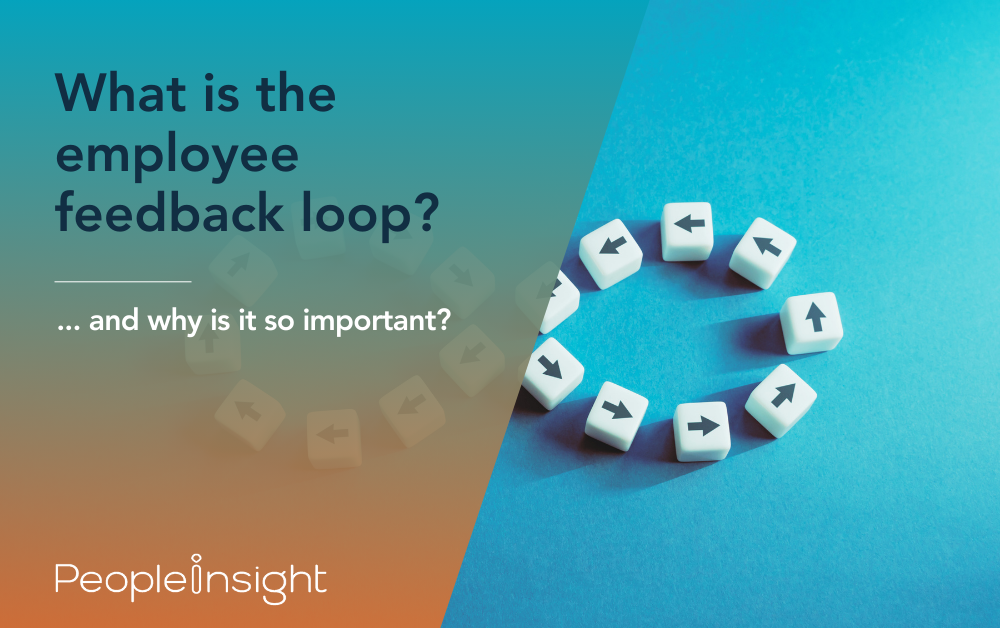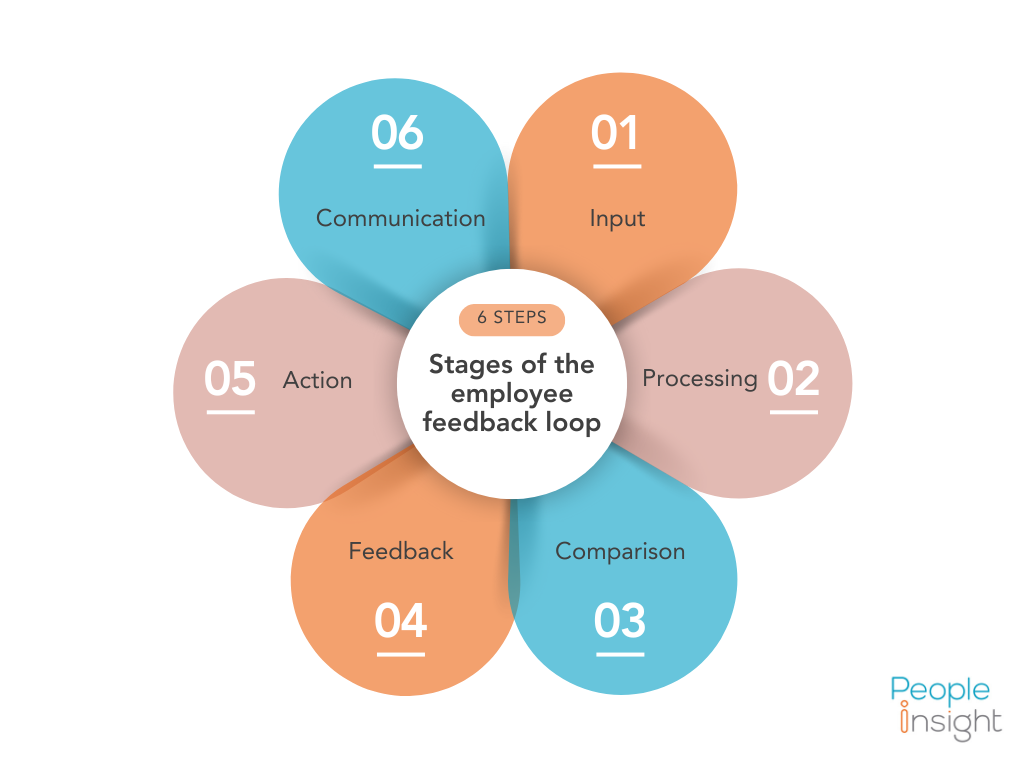
Organisations striving for sustained success often overlook one of the most powerful tools at their disposal — the employee feedback loop.
This process, when implemented effectively, is not just about gathering opinions but about driving meaningful organisational change and improving the employee experience. By integrating a structured feedback loop, companies can make employees feel valued, which has a direct impact on engagement, retention and overall business performance.
Clearly, as long-time employee listening aficionados, we could talk about this topic ad nauseam — but we’ll try to keep it brief and discuss only the most important talking points — what is the employee feedback loop? What are the different stages and why does it matter so much?
Related: What is the employee voice and why does it matter?
The employee feedback loop is a systematic process where employees share their insights, managers respond and (and here’s the rub) action is taken to address the feedback. When it’s done and done right, it’s an ongoing cycle that promotes open communication, trust and continuous improvement within organisations.
Understanding and implementing this loop is key to ensuring employees’ voices lead to tangible changes, ultimately creating a more productive workplace and a happier, more meaningful organisational culture. Now, let’s break down the stages of the employee feedback loop.
The employee feedback loop consists of several distinct stages, each part just as importantl to the process as the other. Here’s how it works:

The first stage involves actively gathering input from employees. This can take various forms, including employee surveys, suggestion boxes, town halls or emails to name just a few. Employees are uniquely positioned to identify challenges and opportunities for improvement, whether related to processes, culture or leadership. Providing multiple feedback channels helps organisations collect as many insights as possible and encourages participation.
This stage is also an opportunity to set a tone of trust. If employees feel their feedback will be ignored or punished, they’ll be less likely to share honest insights. Encouraging openness and clarity from the start is key.
Once feedback is collected, it’s time for management to go about processing everything by identifying patterns, trends and areas that need attention. Whether it’s about unclear communication, employee wellbeing or career development opportunities, managers need to analyse the data objectively and thoroughly.
Data analysis tools and qualitative methods can help uncover recurring themes — AI can be particularly useful when it comes to HR analytics. For example, if multiple employees mention burnout, this indicates an area requiring immediate action. Processing feedback effectively ensures that decisions are based on evidence rather than assumptions.
After processing, feedback should be compared to company goals, industry benchmarks or KPIs. This stage provides context, helping organisations understand whether they are meeting employee expectations or falling short.
For example, if employees report a lack of development opportunities, this can be assessed against internal training programme metrics or retention statistics. Comparison allows managers to prioritise issues and align feedback with broader organisational objectives.
Feedback isn’t just about collecting data — it’s also about closing the loop by sharing outcomes with employees. Managers should provide useful info relating to how specific challenges will be addressed.
Transparent communication builds trust and helps employees see that their input matters. Without this stage, employees might feel their feedback disappears into a void, leading to disengagement and mistrust.
This is the stage where feedback transforms into tangible outcomes. Managers and leaders should prioritise actions that address key concerns or improve the work environment. In this stage (which we refer to as post survey action planning), actions can range from revising company policies to reallocating resources or even cultural shifts.
For example, if feedback highlights dissatisfaction with the work-life balance, actions might include adjusting workloads, revising expectations or introducing flexible working policies. By acting on feedback, companies demonstrate their commitment to improvement.
The final stage is about keeping employees informed about how their feedback influenced decisions. This reinforces trust and encourages continued participation in the feedback process. We find this is the stage that really helps in terms of future response rate — when employees are kept updated about how their insights are being put into action and how plans are progressing, they’re far more likely to participate in future surveys.
Effective communication includes updates on implemented changes, ongoing initiatives and future plans. For example, sharing a report that summarises key feedback themes and subsequent actions can validate employees’ contributions. Closing the loop is what turns feedback into a cycle of continuous improvement.
Implementing a strong employee feedback loop provides quite a wealth of benefits. Here are the key advantages we often see with our clients:
When employees see their feedback resulting in meaningful changes, they are more motivated to perform at their best. Addressing their concerns removes obstacles that hinder productivity, leading to improved overall performance.
An active feedback loop encourages employees to feel more connected to their organisation. Employees who believe their voices matter are more likely to be engaged, enthusiastic and committed to their roles.
Open feedback creates trust between employees and leadership. It creates an environment where individuals feel respected and valued, contributing to a healthier and more collaborative company culture.
Employees are more likely to stay with companies that listen to them. By addressing concerns and demonstrating a commitment to their wellbeing, organisations can significantly reduce turnover rates and associated costs.
To get the most out of the employee feedback loop, it’s important to follow best practices. Here are two fundamental approaches:
Creating a culture of psychological safety can go a long way toward creating a healthy feedback loop. Employees should feel comfortable sharing honest feedback without fear of retaliation or judgement. This involves building trust, showing respect for all opinions, and handling sensitive topics with care.
The feedback process should be a two-way street. Managers should regularly engage with employees, listen actively, and ask thoughtful questions to encourage deeper discussions. Open conversation helps uncover valuable insights and demonstrates a genuine interest in employees’ perspectives.
The employee feedback loop is a commitment to listening, acting and growing together as an organisation. By valuing employees’ input and integrating it into actionable outcomes, companies can build stronger relationships and drive meaningful change.
If you want to harness the power of the employee feedback loop, contact us today to learn how employee surveys can help you understand employee sentiment and improve your workplace.

